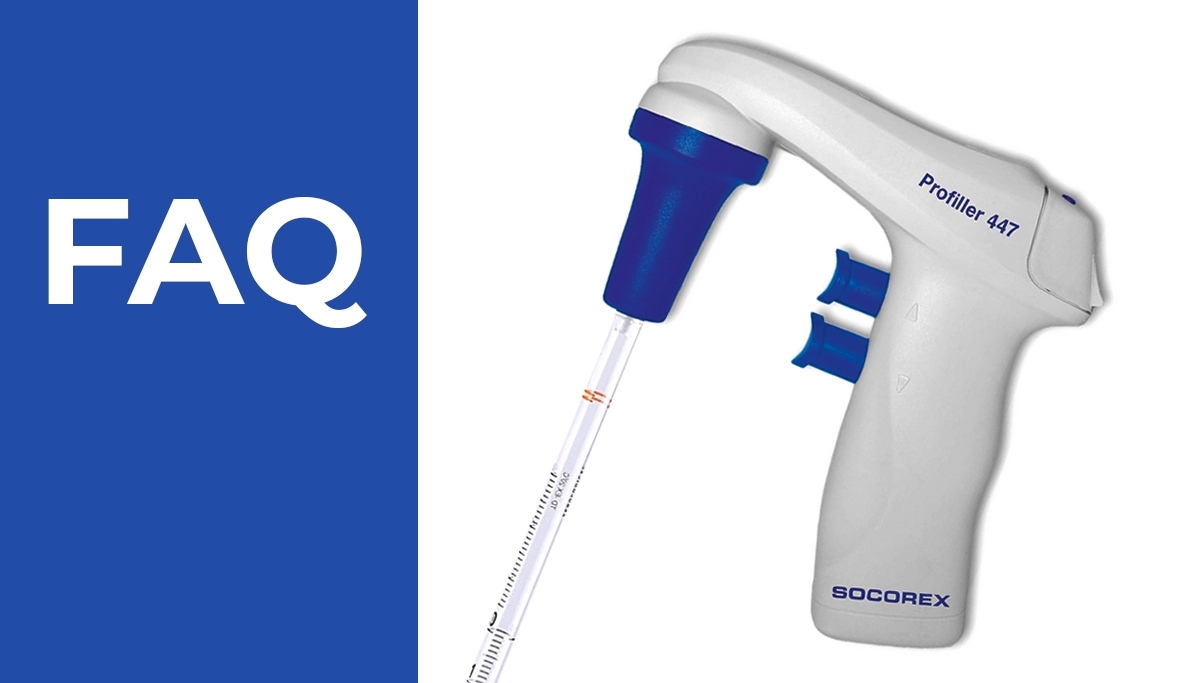Starting from June 2025, our most popular pipette controller will be equipped with a new Li-ion battery. Find answers to the most frequently asked questions about this update in the article.
What is the reason for the battery change?
The reason is product quality improvement – the Li-ion unit has longer battery life, charges quicker (3-4h charging cycle vs 7-8h for NiMH), and is less prone to quick depletion based on improper charging cycles. Having customized batteries also allows us to better control the quality of the batteries and address potential complaints related to charging. Additionally, the instrument will be lighter by approximately 20 g.
What is changing?
Pipette controller housing changes due to the new battery shape and connection to PCB.
Does this change bring new functions to the instrument?
Apart from getting lighter (approx. 20 g less) and charging quicker (3-4h charging cycle), the instrument stays as reliable as it was.
Do I need a new charger for my Profiller electro?
No. Current charger is compatible.
Is the charger compatible with all plug options?
Yes, it is.
Will I be able to buy batteries commercially?
Replacement Li-ion battery will need to be purchased from Socorex as the type and shape is customized. This allows us to better control the quality of the batteries and address potential complaints related to charging.
What if I need a spare part for my current NiMH version?
Except for the battery, rest of the instrument remains unchanged. This means that all the other spare parts will be available. The NiMH batteries will be available from Socorex until stock lasts.
How does the overall battery lifespan change compared to existing NiMH system?
The new Li-ion battery working time is 6h of continuous use and allows for over 500 charging cycles.
When will the new Profiller electro 447 be available?
The change will be implemented for products manufactured as of June 2025 (starting with serial number F474.70001). Your package will be marked accordingly, specifying which battery is powering your device.
Where can I find up-dated documentation about Profiller electro 447 (operating instructions, Quick Guide)?
Please check out the product page and our Knowledge Base for the latest documentation. A practical Quick Guide will also be included in your package. Technical documentation of the previous instrument generations remains available on request.
What is the recommended working temperature? Are there any potential warnings regarding the Li-ion battery?
Operational temperature range: +10°C to +35°C
Charging temperature range: +10°C to +35°C
Storage temperature range: -20°C to +45°C
Warnings regarding the use of Li-ion battery:
- Read the Operating Instructions before use. Improper handling of a Li-ion battery may result in the battery catching fire, overheating or leaking.
- Do not puncture, crush or bend the battery in any way.
- Never attempt to open or modify the battery. This can cause a fire or explosion.
- Do not expose the battery to excessive heat, direct sunlight or fire.
- Stop charging the battery if charging is not completed within the specified time.
- If there are signs of damage, swelling or leakage, stop use and contact the manufacturer immediately.
- Do not short circuit the (+) and (-) terminals with other metals.
Does the 1-year warranty stay the same?
Yes, the warranty period stays unchanged.
Is the CE certificate still valid?
Yes, please refer to the Knowledge Base on our website to download the latest version of the certificate.
Can the product be used while charging?
Yes, you can.
Will the price of Profiller electro 447 increase?
No, the price for the new Li-ion version will remain the same as for the NiMH one.
What is the shelf life of the Li-ion battery?
The shelf life is approximately 10 months. After self-discharge, the residual capacity is >90%.
Is there a change to the packaging?
The packaging for the Profiller electro 447 remains unchanged with mention of battery type on the outer packaging, the label and the supplied Quick Guide.
What is the impact on air freight of Profiller electro 447 (Li-ion batteries are not always welcome)?
UN38.3 tests were performed and confirmed that the battery can be transported by air and sea. The compliance statement is available upon request.


